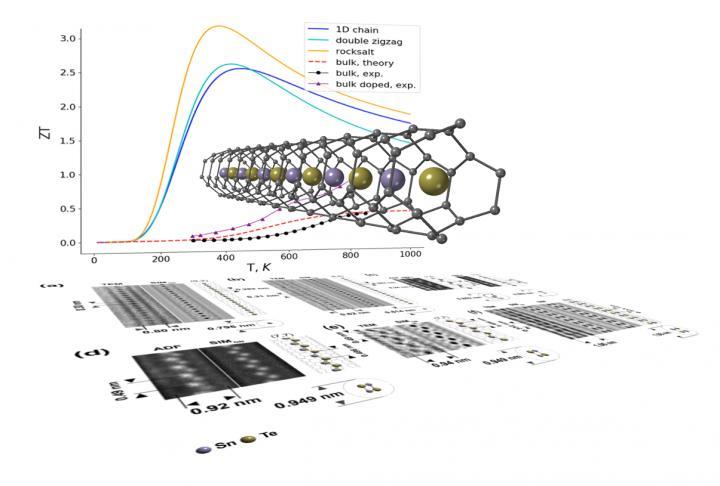The researchers explain that waste heat can be converted to electricity more efficiently using 1D nanoscale materials as thin as an atom. They found that the most effective thermoelectric materials can be realised by shaping them into the thinnest possible nanowires.
Dr Andrij Vasylenko from the University of Warwick, comments: "In contrast to 3D material, isolated nanowires conduct less heat and more electricity at the same time. These unique properties yield unprecedented efficiency of heat-to-electricity conversion in one-dimensional materials."
The researchers were investigating the crystallisation of tin telluride in extremely narrow carbon nanotubes used as templates for the formation of these materials in their lowest dimensional form.
In a combined theoretical-experimental research, they were able not only to establish a direct dependence between the size of a template and a resulting structure of a nanowire, but also to demonstrate how this technique can be used for regulation of the thermoelectric efficiency of tin telluride formed into nanowires 1-2 atoms in diameter.
"This opens up an opportunity for creation of a new generation of thermoelectric generators, but also for exploration of alternative candidate materials for thermoelectrics among abundant and non-toxic chemical elements,” adds Dr Vasylenko.
With a growing demand for both miniatuarisation and enhanced efficiency of thermoelectrics, the belief is nanostructuring will offer a viable route for targeting both objectives.

| Above diagram shows nanowires conducting waste heat to electricity |













